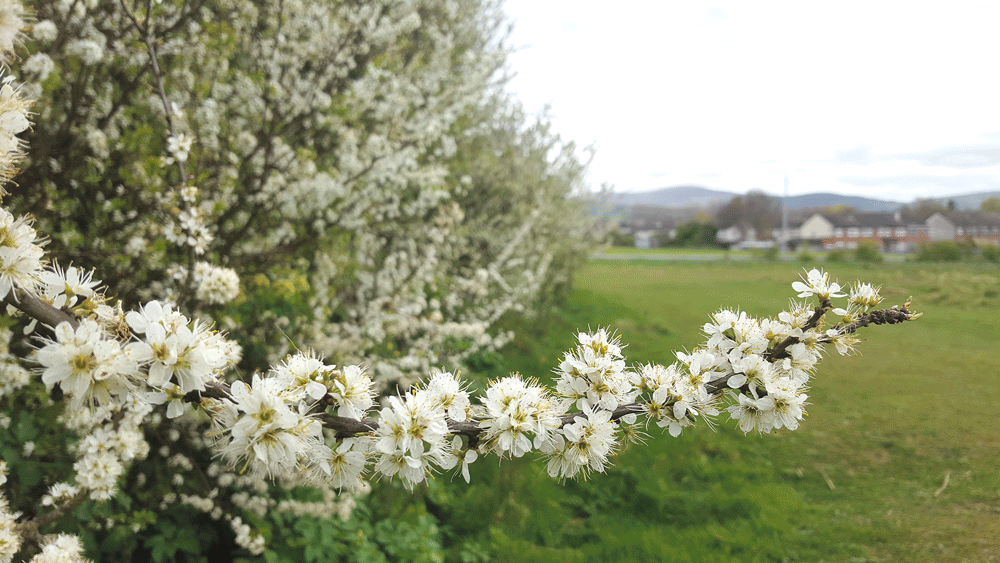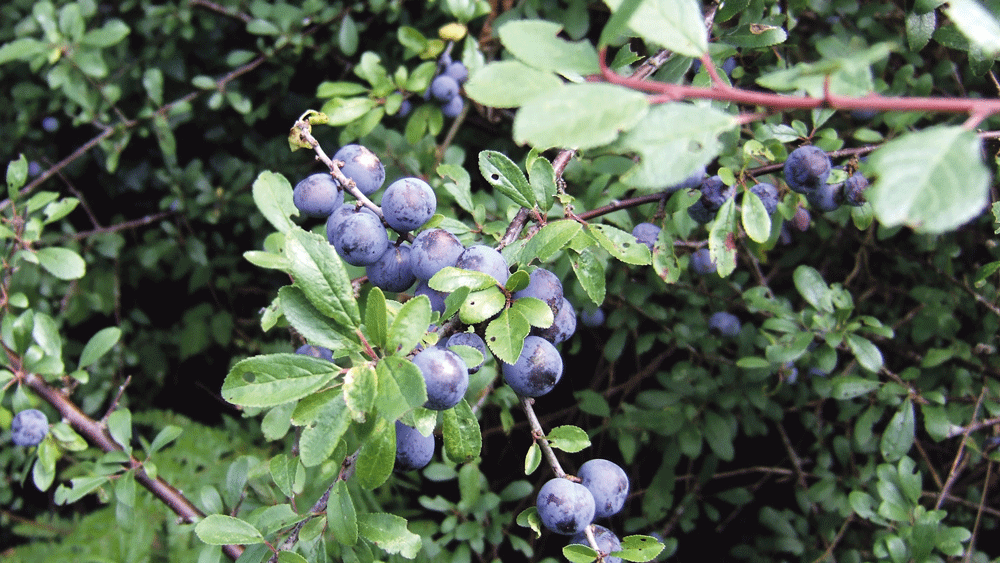

Nature on our doorsteps: Purple sloes
Rosaleen Dwyer is the County Heritage Officer at South Dublin County Council – every week she gives us an insight into the natural heritage around us and the beautiful biodiversity of the plants and creatures.
The fruit of the Blackthorn is the sloe, a small purple-black berry about 1cm in size.
These are visible in hedgerows and around field margins at the moment, where they grow in small clumps along the shrub’s branches.
Blackthorn’s Latin name is Prunus spinosa, where ‘spinosa’ refers to the sharp dagger-like thorns along its twigs and branches.
These thorns, along with the dark colour of its bark, gave rise to its English name of Blackthorn.
The cattle-proof nature of these thorny bushes also made it a very useful plant to grow in hedgerows around grazing pastures.
In springtime, the Blackthorn is one of the first of the hedgerow species to send out its blossoms in early March.
Its pretty white flowers bloom before its leaves, and because it blooms so early, Blackthorn is an important source of pollen and nectar for early bees and butterflies in springtime.
These early insects are important pollinators of the bush’s flowers.
By autumntime, the flowers have been replaced by the fruit of the Blackthorn, the purple-black berry referred to as the sloe.

Maturing sloes are covered in a powdery blue ‘bloom’ of natural yeasts
As sloes mature, they develop a light blue powdery substance on the skin.
This is a naturally occurring yeast, similar to that which grows on bunches of grapes.
This washes off eventually with the rain to reveal the dark purple colour of the sloe underneath.
Sloes contain a large seed kernel inside, and while they taste very bitter to us, they are highly sought after by birds like Thrushes and Blackbirds.
The berries contain good levels of Vitamin C, Vitamin E, potassium, calcium and magnesium.
The shrub’s bark and flowers, also contain high levels of antioxidants and other compounds that are said to offer health benefits.
In the past, these were all used to treat coughs, colds, and bronchitis.
The juice of the sloe was also once used as a dye for cloth, which initially appears as a red colour, but which is said to wash out to a light shade of blue.

